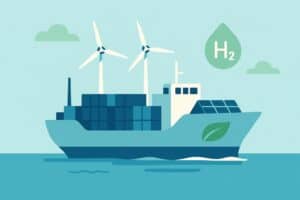Business
How Sustainability in Shipping is Innovating for a Greener Future
The shipping industry plays a crucial role in global trade, transporting billions of tons of goods across oceans and continents annually. However, this vital sector also contributes significantly to environmental challenges, including greenhouse gas emissions, ocean pollution, and resource depletion. As the world increasingly prioritizes sustainability, the shipping industry is undergoing a transformative shift driven by innovation, regulation, and a growing emphasis on environmental responsibility.
This article examines how sustainability is transforming shipping and the innovations driving the transition toward a greener future.
The Environmental Impact of Traditional Shipping
Shipping accounts for approximately 2–3% of global carbon dioxide emissions, a figure comparable to major industrial sectors. This pollution stems primarily from the heavy fuel oils that power most cargo ships, which release harmful pollutants such as sulfur oxides (SOx), nitrogen oxides (NOx), and particulate matter. Additionally, ballast water discharge and accidental oil spills pose threats to marine ecosystems.
As global trade expands, these environmental impacts intensify, prompting governments, shipping companies, and environmental organizations to seek solutions that balance economic growth with ecological preservation.
Innovations Driving Sustainable Shipping
Sustainability in shipping is no longer a distant ideal but an active pursuit fueled by technological innovation. Here are some of the key advancements revolutionizing the industry:
- Alternative Fuels and Propulsion Systems
One of the most promising avenues for reducing emissions is the shift away from traditional fossil fuels toward cleaner alternatives. Liquefied natural gas (LNG), biofuels, hydrogen, and ammonia are gaining attention as lower-emission fuel options. For instance, hydrogen-powered ships produce zero carbon emissions at the point of use, making them an attractive future option.
Additionally, hybrid propulsion systems that combine diesel engines with electric motors are being deployed to optimize fuel efficiency and reduce pollution, particularly in coastal and port areas.
- Energy Efficiency and Ship Design
Innovative ship design also plays a crucial role in reducing environmental footprints. Advances such as hull optimization, air lubrication systems that reduce friction, and wind-assisted propulsion technologies are improving fuel efficiency. The use of lightweight materials and more aerodynamic shapes enables vessels to consume less energy without sacrificing cargo capacity.
Moreover, digital technologies like AI and big data analytics help optimize shipping routes, speeds, and logistics to minimize unnecessary fuel consumption.
- Emission Control Technologies
To comply with increasingly strict international regulations, shipping companies are adopting emission control technologies such as scrubbers, which remove sulfur oxides from exhaust gases, and selective catalytic reduction systems to reduce nitrogen oxide emissions. These systems help ships meet the standards set by the International Maritime Organization (IMO) for cleaner air.
The Role of Air Freight in Sustainable Shipping
While sea freight remains the backbone of global shipping, air freight also plays an important role in the supply chain—especially for high-value or time-sensitive goods. Innovations in air freight sustainability, such as the use of sustainable aviation fuels (SAFs), more efficient aircraft designs, and carbon offset programs, contribute to lowering the carbon footprint of air transport.
For businesses seeking to strike a balance between speed and sustainability, partnering with freight services that prioritize eco-friendly practices is crucial. Companies like Future Forwarding offer specialized air freight solutions designed to optimize logistics while reducing environmental impact.
Regulatory Pressure and Industry Collaboration
Sustainability efforts in shipping are further propelled by regulatory frameworks, like the IMO 2020 sulfur cap, which limits the sulfur content in marine fuels, and the IMO’s strategy to reduce greenhouse gas emissions by at least 50% by 2050. These regulations compel shipping companies to innovate and adopt greener practices.
Industry-wide collaboration is also essential. Initiatives such as the Getting to Zero Coalition bring together governments, manufacturers, and shippers to accelerate the development and deployment of zero-emission vessels.
Challenges and the Road Ahead
Despite progress, achieving full sustainability in shipping faces challenges. The high costs of new technologies, infrastructure requirements for alternative fuels, and the long lifespan of existing vessels slow the transition. However, the increasing availability of green financing and growing consumer demand for responsible shipping practices create positive momentum.
The future of shipping lies in the integration of multiple strategies—clean fuels, innovative designs, smarter logistics, and strong policy support—to achieve meaningful environmental benefits.
Conclusion
Sustainability in shipping is no longer optional but imperative for protecting the planet while supporting global commerce. Through innovation, collaboration, and responsible action, the shipping industry is charting a course toward a greener future. From cleaner fuels to smarter logistics, every advancement brings us closer to a world where goods move efficiently without compromising the health of our oceans and atmosphere.
For businesses navigating this evolving landscape, exploring sustainable shipping options, including air freight solutions, can be a key part of reducing their environmental impact while maintaining competitive edge. The path forward is clear—innovation is the key to unlocking a sustainable shipping industry for generations to come.






